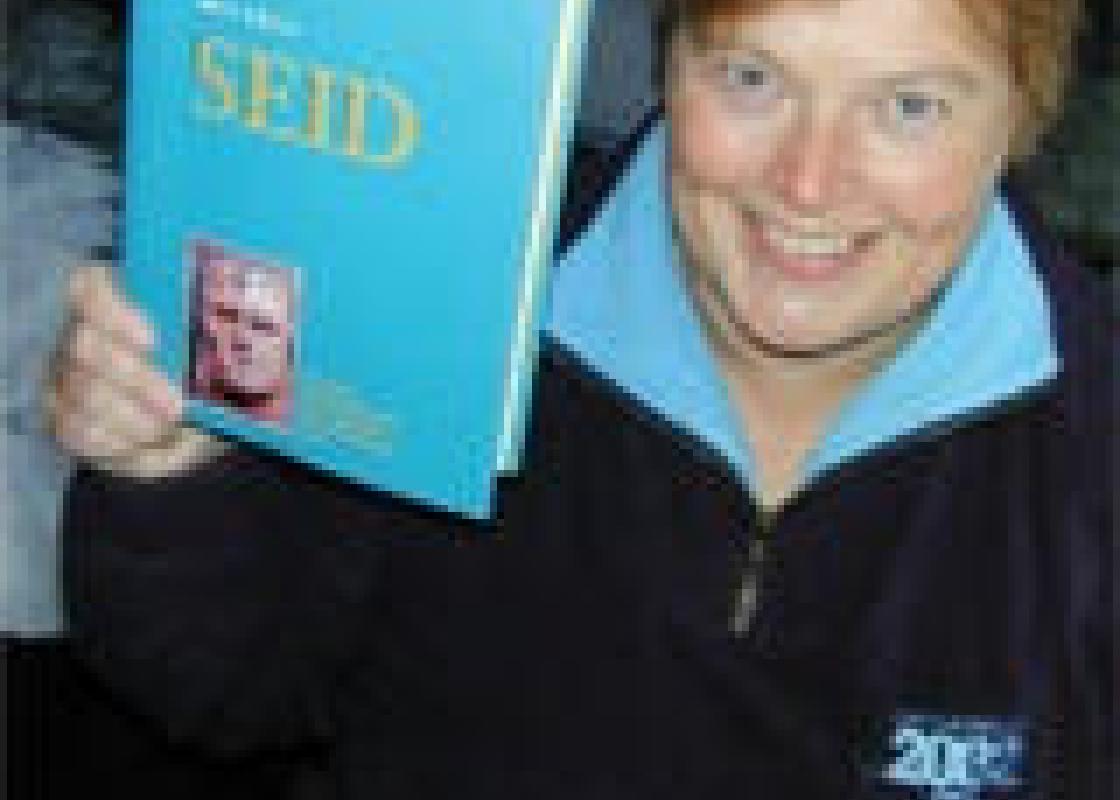
Brit Solli’s argument that Odin was queer is based on the fact that he was master of seid. Seid is the Norse form of magic. When a master of seid fell into trance or reached ecstasy, his soul transcended. He could travel to the kingdom of the dead and meet with the past, or he could look into the future. A master of seid could see and control the faith of people. She writes about this in the Norwegian book Seid. Myter, sjamanisme og kjønn i vikingenes tid ("Seid, Myths, Shamanism and Gender in the Viking Era.")
This Norse form of ecstatic magic was physical and transcended boundaries. The ecstasy could be of a sexual kind or have strong sexual undertones, and through seid you could transcend the borders of your own gender. This is why seid was considered dangerous.
Seid actions were not in accordance with the rigid gender pattern we find both in older law texts and in the Norse mythology. Strong sanctions were inflicted upon men who crossed the borders of manhood, both in the mythological world as well as in real life. Seid was a female activity. A male god who did seid could be accused of ‘ergi’, which meands unmanliness. Ergi also means soft or coward – and used sexually it means subjection. To be accused of ergi was the worst kind of insult for a man.
And yet, Odin, the God of War himself, was the greatest master of seid. How could it be that the most important of all Viking warriors undertook a woman’s task? How could he do something that was considered ergi?
- In our culture we see sexuality and gender as biology, says Brit Solli. But newer knowledge informs us that gender also is tied to culture, as well as history and social norms. Seid becomes a form of social transsexualism, transcending biological sex.
It was through seid that Odin did his most important deeds. By means of a border crossing ritual he travelled to the kingdom of the dead where he found knowledge, symbolized by runes. Disguised as a woman he managed to beget a son to avenge Balder. In Odin the most powerful male god, the War Lord, is united with the unmanly seid. During the Viking period gender transgression and queerness were despised in everyday life. But in matters of the divine, border crossing, including transgression of gender boundaries, was necessary. Odin had to be queer in other to keep up his Norse cosmos.
In the Norse cult women were ritual performers, and Frøya was the foremost of the sorceresses. According to Solli, The famous Oseberg ‘queen’ was probably not a queen in the modern sense, but a powerful sorceress who used seid and magic. Ecstasy was needed in the Norse culture and mythology. With the introduction of Christianity, the cult of ecstasy was suppressed and replaced with an ascetical cult. In the Christian culture the basic value has been an almost bodiless asceticism.
Solli maintains that Norse customs share traits with Sámi life and traditions. This is shown by archaeological findings and in the traditional Sámi ideology. As in seid, border crossing and ecstasy are vital in shamanism. No wonder that Christian leaders introduced strong prohibitions and sanctions to stop Christians from seeking help from the Sámi people.
Of course, the Christening of Norway also had some positive impacts, adds Solli. To set unwanted children out to die became illegal, and the doctrine of personal salvation was introduced.
Reclaiming the Viking era
- The Viking texts are amazing, the Solli says. But for a long time researchers did not use them. The historians held that the texts were ‘just’ magnificent literature, with little truth to them. Snorre was seen as an excellent writer, but denounced as historian. This strong criticism of the texts led researches to concentrate on analogies with distant societies, for instance Polynesian clan societies. However, researchers of history of religions and other researchers are slowly starting to show a renewed interest in the Norse texts.
Maybe the sagas – the Norse historical texts – are not true to the letter, but the cultural patterns they show can tell us a lot about the way people thought. Today there is a strong interdisciplinary interest in renewed interpretations of the Norse texts.
Brit Solli feels that the view of the Viking era has an undeserved conservative and nationalistic imprint, both in England and in the Nordic countries.
- Maybe it has been important to see it this way, because of the Scandinavian nation building. However, Solli points to negative consequences of this. Extreme right wing nationalists and neo nazis have exploited the ‘macho’ part of the Viking myth. Nor does the archaeologist favour the stereotypical image of the Viking woman as proud housewife.
- It is time to reclaim the diversity that the Viking era represented both in culture and in view of gender, Solli states. The Vikings were not like us. They belonged to a culture that was, in many ways, different and quite strange. I focus on Viking ideas of gender, sexuality and sometimes the very ecstatic practice of religion. It was really a radical cultural break when Christianity became the only accepted religion, she underlines.
For more than 150 years researchers have known that Odin, the most important god of the Vikings, acted in a way a ‘real man’ should not act.. But they have been very careful in their interpretation of this, if it has been mentioned at all. But Brit Solli has chosen a different approach!
